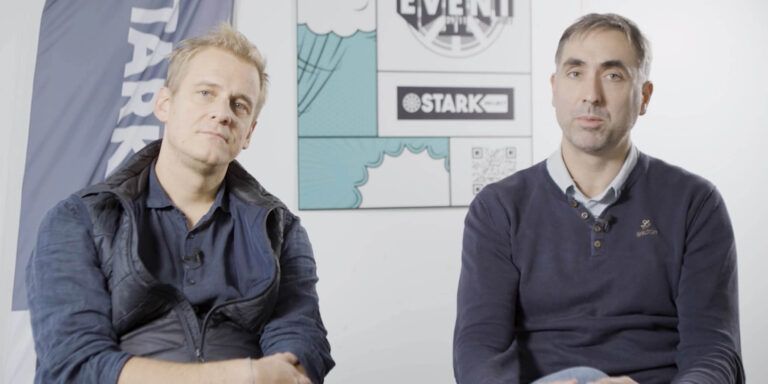You work tirelessly to achieve your goal, only to have to start the labor-intensive process again from the beginning due to forces beyond your control. If this sounds familiar, then you might be the mythic Greek figure, Sisyphus, doomed to repeatedly push a boulder uphill for all eternity. If you’re not Sisyphus, you likely work in supply chain.
Sales and operations planning (S&OP) is difficult for consumer goods companies even in the best of economic conditions, but the task feels downright Sisyphean in the current market. Suppliers struggle tirelessly to overcome unexpected material scarcity, product shortages, and supply chain snags to provide for their retail and wholesale customers. Those that do meet their initial forecasts often find that customer demand has suddenly shifted due to changing consumer preferences, resulting in a mismatch of available supply and expected demand.
But consumer goods suppliers are not doomed to respond to the whims of external forces like poor Sisyphus. Suppliers can quickly, collaboratively, and effectively influence customer demand to better match existing supply using demand shaping strategies and tactics. Companies should embrace demand shaping technology to gain some control amid supply chain chaos and carve their path toward profitability.
What is demand shaping?
Demand shaping refers to a company’s collective attempts to influence customer demand for specific products. Companies use demand shaping to balance inequities in supply or demand. Surplus inventory of a product may lead a business to offer a promotion to incentivize turnover. Businesses could also use temporary pricing discounts to increase demand for a more abundantly available product when supply chain disruptions or shortages affect the customer’s initial preference.
Demand shaping requires close collaboration between marketing, sales, and operations teams to achieve success. A company’s decision to deploy a promotion or discontinue a product can stem solely from a need to improve profit margins. But demand shaping presents companies with an opportunity to also use these tactics to address supply and demand issues on the way to boosting revenue.
Consumer goods companies especially benefit from an S&OP process that takes advantage of demand shaping. Fast-moving consumer goods (FMCG) often have short shelf lives or are vulnerable to spoilage. Companies can use demand shaping to maintain low inventory levels to reduce both physical and fiscal waste even in the face of supply disruptions and demand volatility.
The most effective short- and long-term demand shaping tactics
Companies looking to strengthen their S&OP processes with demand shaping have a wide range of tactics to choose from. Some of these tactics influence demand in the short term, while others play out over a longer timeline.
Short-term tactics
Consumer goods companies have many levers to pull when it comes to affecting more immediate consumer demand. The most effective methods include:
- Pricing. Temporarily reduce prices on specific products to increase turnover and reduce inventory levels. Use price changes to encourage the purchase of one product over another in the event of scarcity, like discounting the price of bottled drinks to reduce demand for aluminum cans.
- Trade promotions. Collaborate with retailers to run in-store promotions that attract special attention to particular products, especially those that could serve as alternatives to shortage-affected goods. Examples include in-store displays, on-site demos and samplings, or visible promotions like coupons or buy-one-get-one (BOGO) deals.
- Sales incentives. Change bonuses, commission rates, or other incentives offered to sales representatives or distributors to indirectly influence demand. Increase these incentives to move more of a particular product and reduce these incentives in the face of expected shortages.
- Channel-specific assortment prioritization. Manipulate assortment choices per channel to affect consumer demand. Companies can prioritize alternative products in particular channels to attract consumer attention away from scarce products.
Short-term tactics are essential because they allow consumer goods companies to affect demand in weeks, not months — a point of importance for companies who often sell products that quickly spoil or expire. This emphasizes the importance of open collaboration in shortening deployment timelines and maximizing the effectiveness of short-term demand shaping efforts.
Long-term tactics
Truly effective S&OP processes look beyond immediate challenges and lay the groundwork for at least the next 18 months. This requires demand shaping tactics that influence demand over a longer period, including:
- New product introductions and changes to existing products. Develop products from abundantly available materials that serve as substitutes for existing goods vulnerable to supply chain shortages. An alternative tactic involves changing an existing product’s specs to avoid scarcity issues while also fueling consumer interest. These alterations include changes to packaging, materials, or even recipes for food and beverage products.
- Changes in distribution. Consider opening or expanding distribution within new sales channels. The pandemic and other disruptions have only accelerated the growth of channels like ecommerce, direct-to-consumer (DTC), and quick commerce. Companies can release and highlight specific products within these channels to increase demand for goods that are more readily available.
The phrase “long term” can be misleading. A new product or distribution change can greatly impact demand quickly. It’s the market research, planning, and development phases to these tactics that differentiate these tactics from shorter term methods.
3 must-have features for effective demand shaping
The cost-saving, waste reducing, and supply chain-optimizing benefits of demand shaping are impossible to ignore. But if demand shaping is such an essential component of consumer goods S&OP, then why isn’t everyone doing it?
The answer largely boils down to one thing: a lack of proper demand shaping technology. Suppliers’ existing systems too often can’t perform the complex tasks required to detect immediate demand shifts. There’s also an understandable hesitancy to undertake resource- and labor-consuming demand shaping efforts without being able to quantify their potential real-world impact.
The best modern supply chain platforms have developed features specifically tuned to address these concerns. These features provide greater visibility into the process for all stakeholders involved.
There are three essential features consumer goods companies should look for in a demand shaping solution:
1. Demand sensing and machine learning
Consumer goods companies can’t shape demand if they can’t measure what it is in the first place. Proper demand shaping software will also come equipped with demand sensing capabilities. Demand sensing combines a supplier’s internal reorder and historical data with retailer POS data and external data sources to create and adjust highly accurate demand forecasts.
Highly accurate demand sensing and forecasting require an AI-powered platform with machine learning capabilities. Machine learning systems detect demand changes faster and more accurately than any team of humans could hope to accomplish. They also retain insights gained from each event, reducing the amount of repetitive work planners end up doing in the long run.
Read more: Machine learning in CPG demand forecasting: Considering retail data drives results
These demand sensing forecasts provide a baseline understanding of the current state of consumer demand and help planners detect sudden shifts in that demand. This allows suppliers to evaluate and better understand the effects retail price changes, promotions, and product substitutions have on consumers. Demand sensing also helps them determine if shaping efforts are needed in the first place, informing stakeholders of the best tactics for matching forecasted supply with expected demand.
Read more: How demand sensing helps conquer FMCG supply chain chaos
2. Digital supply chain twin
The digital supply chain twin is software that provides a detailed model of the physical supply chain. The digital twin provides continuous visibility into how demand and business decisions affect capacity and resource requirements, deliveries and goods flow, and inventory and spoilage. Think of it as an advanced simulation of a company’s entire supply chain that receives data updates daily from numerous sources, helping to determine how goods and information flow within the system.
Features like scenario planning and what if-analyses help to test the impact of demand shaping tactics before companies deploy them in the real world. But businesses need the digital twin to reveal the effect these commercial decisions have on a company’s inventory, resource, and capacity requirements. This allows them to make decisions that lead to a supply and demand equilibrium.
3. User-specific views
User-specific views are essential to gaining buy-in from stakeholders within a consumer goods organization. Demand shaping software contains great insights for stakeholders from various teams and departments. The difficulty lies in showing these busy stakeholders how to use the software in a meaningful way. Busy sales teams, planners, or operations managers aren’t likely to continue using a platform that requires time and effort just to unearth data relevant to their jobs.
The best supply chain solutions allow users to configure views specific to their individual needs without forcing them to sift through irrelevant data, which makes them more likely to consistently use the platform. A sales representative will want to review different data sets than a supply chain engineer and won’t want to sift through massive volumes of data to find them. Widespread and consistent usage from employees results in enhanced company-wide collaboration and communication, enabling companies to make intentional business decisions using the same information.
Shape demand — and then meet it
A company that effectively shapes demand to match their supply will create a more cost-effective and sustainable supply chain. But that same company won’t realize these benefits unless they’ve invested in processes to get their products to the right customers through the right channels — and all within the right timeframe. Companies will also struggle to reach their supply chain optimization goals without open collaboration between their supply chain, commercial, and financial divisions.
RELEX enables suppliers to sense, shape, and ultimately meet demand. AI-powered machine learning enables our consumer goods customers to detect and react to volatile customer demand with highly accurate forecasts and automated replenishment. RELEX combines complex capabilities with ease-of-use, allowing companies to align diverse teams on long-term S&OP to meet business goals as a single unified organization.
Even in the current period of disruption, the demand is yours for the shaping. Bring your supply and demand into balance with RELEX.
This article is the third of four focused on helping consumer goods companies navigate the market shifts we’re currently seeing across the globe. The first article details the fundamentals of maintaining control of the FMCG supply chain, while the second article covers the ins and outs of demand sensing.




